Drink GOAT MILK? Are You KID-ding Me?
Pun intended. And nope, I’m not KID-ding. Here’s why: It is nutrient dense and calorie skinny. Unlike cow's milk there is no need to homogenize goat's milk. While the fat globules in cow's milk tend to separate to the surface, the globules in goat's milk are much smaller and will remain suspended in solution. But there are even more reasons to seriously consider drinking goat's milk:
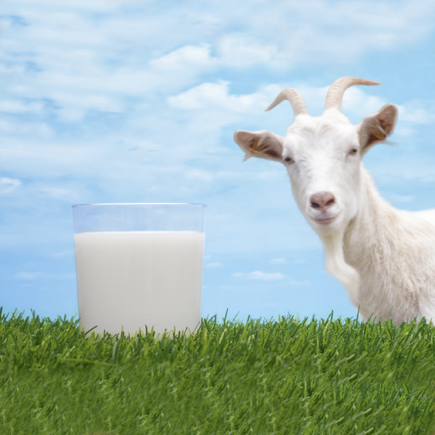
Research also shows that replacing cow's milk with goat's milk helps reduce recurrent ear infections, asthma, eczema, and even rheumatoid arthritis—all symptoms of dairy allergies.
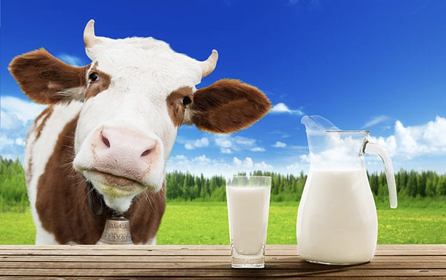
Lastly, here’s an amazing fact about goat’s milk that cinches the deal for me: goats are a bio-organic sodium animal, while cows are a calcium animal. It’s common knowledge goats can climb and do things that are amazing, such as getting up onto the roofs of barns and houses. You have to wonder HOW that is possible. They’re much more flexible and limber than cows. And this is because they’re a bio-organic sodium animal.
Bio-organic sodium in known as the youth element. It’s a lack of this essential mineral that brings on the symptoms of old age (arthritis, for instance). The highest sources of bio-organic sodium is found in goat milk and sweet goat whey. It keeps them young, active, flexible, and limber all of their lives. There are no “old goats” in the human sense. They can climb, jump, leap, and walk all of their lives because bioorganic sodium is the joining mobilizing material that makes this possible. Now there’s food for thought (another dopey pun intended).
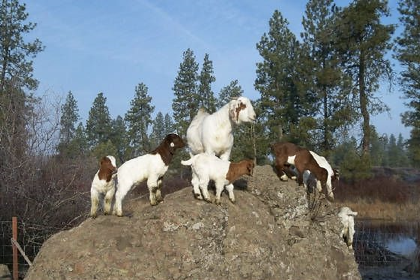
The list of reasons for including goat’s milk in the diet can truly go on, but suffice it to say, it’s an amazing food that ought to be given more consideration. If goat’s milk interests you, here’s are a recipe you might want to try. Who doesn’t like caramel sauce? But one that contributes a few health factors? Heck of a deal!
This caramel sauce is called CAJETA (pronounced cah-heh-tah). And it’s a delicious Mexican sauce made from goat milk. (I found this recipe on www.everything-goat-milk.com website.)
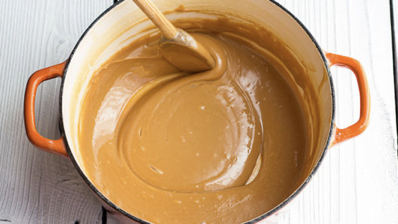
You can use it any way you’d normally use caramel, such as for topping ice cream, dipping apples, or topping cookies or cake. The basic recipe is delicious as is, but you can also add flavorings for a special taste. Flavorings should be added after the mixture has cooked — otherwise, you'll cook most of the flavor out before it's finished! Consider trying a variety of flavors (believe me, you’ll be making this a lot): vanilla extract, maple flavoring, almond extract, rum or rum extract.
The bad news is that the process is not a short one — you will need to dedicate approximately 45 minutes to an hour to stirring and monitoring the milk. The good news is that the heat releases that wonderfully unique goat milk smell that you can enjoy inhaling during the work! The bottom line, however: This is a recipe worth all the time and effort it takes!
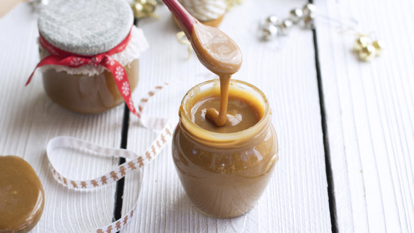
1 quart goat milk
1 cup sugar
1/4 teaspoon baking soda
1 1/2 tablespoons cornstarch
Directions:

- It’s a terrific source of calcium.
- It’s loaded with the amino acid tryptophan.
- It’s a great source of protein.
- It’s full of phosphorus, riboflavin (vitamin B2) and potassium.
Research also shows that replacing cow's milk with goat's milk helps reduce recurrent ear infections, asthma, eczema, and even rheumatoid arthritis—all symptoms of dairy allergies.

Lastly, here’s an amazing fact about goat’s milk that cinches the deal for me: goats are a bio-organic sodium animal, while cows are a calcium animal. It’s common knowledge goats can climb and do things that are amazing, such as getting up onto the roofs of barns and houses. You have to wonder HOW that is possible. They’re much more flexible and limber than cows. And this is because they’re a bio-organic sodium animal.
Bio-organic sodium in known as the youth element. It’s a lack of this essential mineral that brings on the symptoms of old age (arthritis, for instance). The highest sources of bio-organic sodium is found in goat milk and sweet goat whey. It keeps them young, active, flexible, and limber all of their lives. There are no “old goats” in the human sense. They can climb, jump, leap, and walk all of their lives because bioorganic sodium is the joining mobilizing material that makes this possible. Now there’s food for thought (another dopey pun intended).

The list of reasons for including goat’s milk in the diet can truly go on, but suffice it to say, it’s an amazing food that ought to be given more consideration. If goat’s milk interests you, here’s are a recipe you might want to try. Who doesn’t like caramel sauce? But one that contributes a few health factors? Heck of a deal!
This caramel sauce is called CAJETA (pronounced cah-heh-tah). And it’s a delicious Mexican sauce made from goat milk. (I found this recipe on www.everything-goat-milk.com website.)

You can use it any way you’d normally use caramel, such as for topping ice cream, dipping apples, or topping cookies or cake. The basic recipe is delicious as is, but you can also add flavorings for a special taste. Flavorings should be added after the mixture has cooked — otherwise, you'll cook most of the flavor out before it's finished! Consider trying a variety of flavors (believe me, you’ll be making this a lot): vanilla extract, maple flavoring, almond extract, rum or rum extract.
The bad news is that the process is not a short one — you will need to dedicate approximately 45 minutes to an hour to stirring and monitoring the milk. The good news is that the heat releases that wonderfully unique goat milk smell that you can enjoy inhaling during the work! The bottom line, however: This is a recipe worth all the time and effort it takes!

Cajeta Sauce
Yield: 1 cup
Ingredients:
1 quart goat milk
1 cup sugar
1/4 teaspoon baking soda
1 1/2 tablespoons cornstarch
Directions:
1. Stir baking soda and cornstarch into a small amount of milk, being sure to completely dissolve any lumps.
2. Pour remainder of milk into a medium-size pan; add the sugar, stirring to dissolve.
3. Finish by adding the baking soda mixture.
4. Bring to a boil over medium to medium-high heat, stirring constantly. Adjust the heat setting as needed to maintain a steady boil, without allowing the mixture to boil over.
5. Continue stirring.
6. As the mixture thickens, it will begin to take on a caramel color. It's very important that you continue to stir constantly at this stage, or it may begin to stick to the bottom and burn.
7. Continue cooking until it reaches the desired consistency — whether you want it thin enough to pour, like a caramel sauce, or thicker, like a candy. Remember, though, to compensate for the fact that the sauce will thicken as it cools.
8. When you're happy with the result, remove from heat and pour into a jar or bowl to cool. Use warm, or refrigerate for later (padlock that refrigerator if you plan to use it later!).
NOTES:
Since the milk is cooked, canned goat milk works just fine for making cajeta. So, you may want to save your fresh goat milk for a recipe where the taste will be affected more.
Save time by making a large batch and canning the extra. Boil the canning jars, lids and rings for ten minutes. Leave in the hot water until the cajeta is ready. Remove the canning supplies with tongs, and pour the hot caramel into the jars. Wipe away any drips from the openings of the jars, and close with the lids and rings. Cover the jars with a heavy towel and leave undisturbed until the lids seal (you'll hear a loud "pop").
2. Pour remainder of milk into a medium-size pan; add the sugar, stirring to dissolve.
3. Finish by adding the baking soda mixture.
4. Bring to a boil over medium to medium-high heat, stirring constantly. Adjust the heat setting as needed to maintain a steady boil, without allowing the mixture to boil over.
5. Continue stirring.
6. As the mixture thickens, it will begin to take on a caramel color. It's very important that you continue to stir constantly at this stage, or it may begin to stick to the bottom and burn.
7. Continue cooking until it reaches the desired consistency — whether you want it thin enough to pour, like a caramel sauce, or thicker, like a candy. Remember, though, to compensate for the fact that the sauce will thicken as it cools.
8. When you're happy with the result, remove from heat and pour into a jar or bowl to cool. Use warm, or refrigerate for later (padlock that refrigerator if you plan to use it later!).
NOTES:
Since the milk is cooked, canned goat milk works just fine for making cajeta. So, you may want to save your fresh goat milk for a recipe where the taste will be affected more.
Save time by making a large batch and canning the extra. Boil the canning jars, lids and rings for ten minutes. Leave in the hot water until the cajeta is ready. Remove the canning supplies with tongs, and pour the hot caramel into the jars. Wipe away any drips from the openings of the jars, and close with the lids and rings. Cover the jars with a heavy towel and leave undisturbed until the lids seal (you'll hear a loud "pop").
Recipe formatted with the Cook'n Recipe Software from DVO Enterprises.
Sources:
- www.essentialsbycatalina.com
- www.samitivejhospitals.com
- www.pinterest.com
- www.tablespoon.com
 Alice Osborne
Alice Osborne
Weekly Newsletter Contributor since 2006
Email the author! alice@dvo.com
